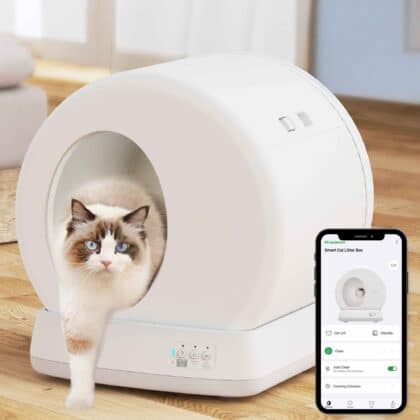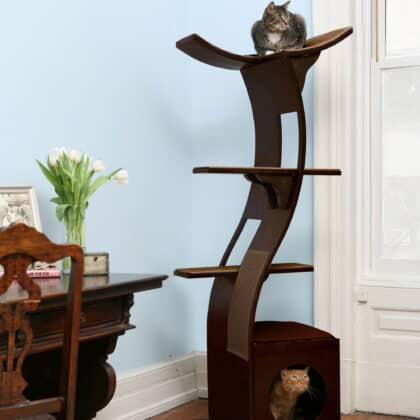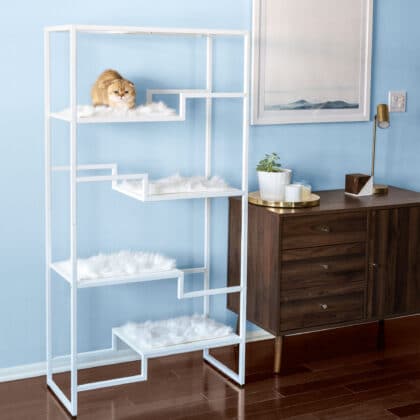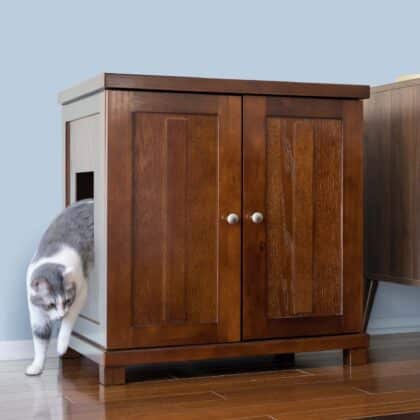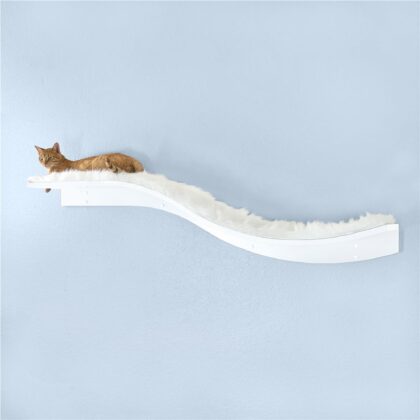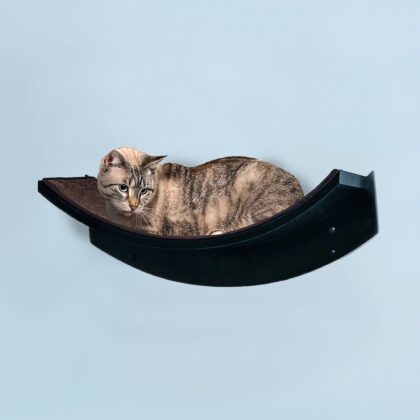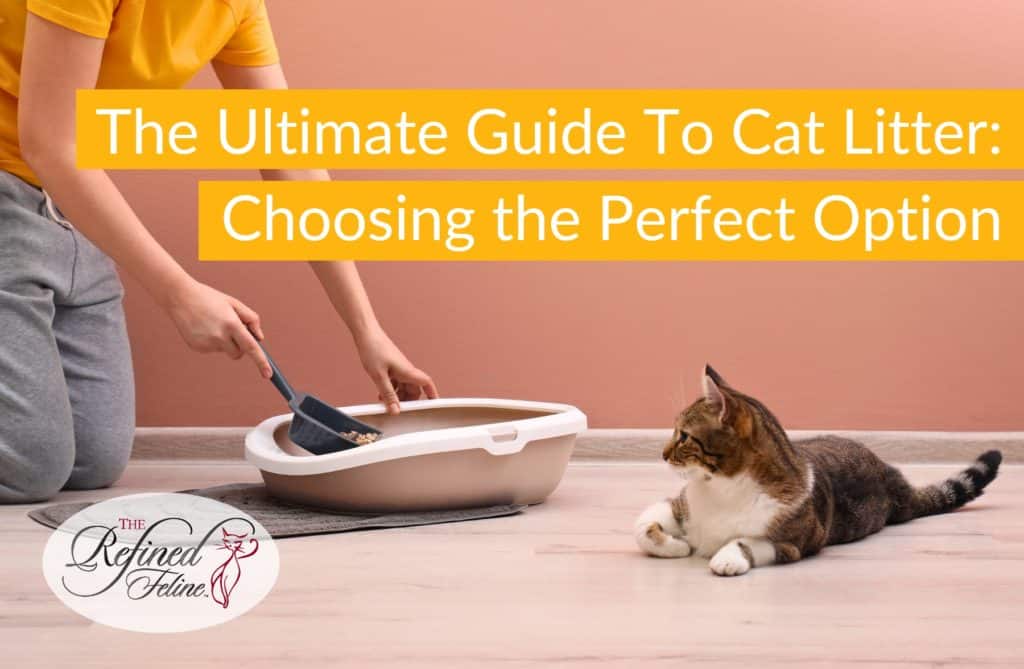
The Ultimate Guide to Cat Litter: Choosing the Perfect Option for Your Cat
As devoted cat parents, we all understand that providing a comfortable and hygienic litter box environment is important for our feline companions. With countless options available in the market, selecting the right cat litter is a daunting task. Fear not, dear readers! In this guide, The Refined Feline will explore the various types of cat litter, their pros and cons, and help you make an informed decision when it comes to choosing the perfect litter for your feline friend.
Things To Consider When Choosing A Cat Litter:
Clumping or Non-Clumping Litter:
One of the primary decisions when selecting cat litter is whether to choose a clumping or non-clumping litter. Clumping litter is typically made from a substance called bentonite clay and forms solid clumps when it comes into contact with liquid waste, allowing for easy removal and cleaning. Typically, non-clumping litter, often made from materials like recycled paper or silica gel, absorbs liquid but doesn’t form clumps. Remember that clumping litter tends to be more convenient for cleanliness, while non-clumping litter is generally dust-free and lightweight.
Odor Control:
Maintaining a pleasant scent in your home is essential, and choosing a cat litter with effective odor control properties can make a world of difference. Many litters are specifically made to minimize unpleasant smells, using ingredients such as activated charcoal or baking soda. You should consider opting for litters with odor-control features or a litter box deodorizer to keep your cat’s litter box area fresh and inviting.
Dust and Tracking:
Dust and tracking are common concerns when it comes to cat litter. These dust particles can irritate your cat’s breathing and create a mess around the litter box. You will want to look for low-dust or dust-free options, especially if you or your cat have allergies or respiratory issues. Additionally, litter that minimizes tracking can help reduce the spread of litter throughout your home, keeping your living space cleaner. Try a litter box cabinet to help maintain a clean and private environment for your cat.
Environmental Considerations:
For environmentally-conscious cat owners, eco-friendly litter options are becoming very popular. These litters are typically made from biodegradable materials such as corn, wheat, or recycled paper. By choosing eco-friendly cat litter, you can actively reduce your carbon footprint and contribute to a more sustainable future.
Texture and Comfort:
Cats have unique preferences when it comes to the texture of their litter. Some cats prefer fine-grain litter, while others may prefer a coarser texture. You can observe your cat’s behavior and learn how to provide them with a litter that matches their preferences. Additionally, consider litters that mimic natural substrates like sand or soil, as they can enhance your feline’s comfort and encourage natural litter box behaviors.
Multi-Cat Considerations:
If you have multiple cats, it’s important to choose a litter that can accommodate their needs. Clumping litter is often recommended for multi-cat households as it makes scooping easier. Selecting a litter with enhanced odor control can help manage the increased waste produced by multiple cats effectively. In addition to choosing the right litter for your multi-cat household, you can provide them with a large litter box.
Transitioning and Cat Preferences:
Cats can be very sensitive to changes, including changes in litter type. If you decide to switch litters, it’s advisable to do so gradually by mixing small amounts of the new litter with the old one over several days. This helps your cat adapt to the new texture and scent more comfortably. Additionally, keep in mind that some cats may have individual preferences, and what works for one cat may not work for another. Make sure to be attentive to your refined feline’s reactions and adjust your choice accordingly.
Different Types of Cat Litter:
Clumping Clay Litter:
Clumping clay litter is one of the most popular choices among cat owners. It forms solid clumps when in contact with moisture, making it easy to scoop and maintain cleanliness. The litter effectively controls odors and is available in both scented and unscented varieties. However, it is essential to note that some cats may develop sensitivities to the dust produced by clay litter. Clay is also not a renewable resource.
Silica Gel Crystals:
Silica gel litter consists of porous, moisture-absorbing crystals that lock in odor and moisture. This type of litter is known for its excellent odor control and its ability to absorb large amounts of liquid. The crystals are non-clumping, making it easy to remove solid waste. However, some cats may not prefer the texture of the crystals, and it may be less eco-friendly compared to other options.
Natural and Biodegradable Litters:
Natural and biodegradable litters are an excellent choice for environmentally conscious cat owners. It’s made from materials such as recycled paper, wood, corn, or wheat, these litters are renewable and eco-friendly. They often offer good odor control and clumping properties, but it’s essential to consider your cat’s preferences as some may be more sensitive to different textures and scents.
Pellet Litters:
Pellet litters are typically made from recycled newspaper or wood. They absorb moisture and control odors effectively. Some pellet litters break down into sawdust when in contact with liquid, simplifying clean-up. However, pellets may be larger and less comfortable for some cats to walk on compared to finer-textured options.
Pine Litter:
Pine litter comes from compressed sawdust pellets and is a popular choice for its natural scent and effective odor control. It is highly absorbent, minimizing tracking around the house. Pine litter is usually dust-free and gentle on cats’ paws. However, some cats may take time to adjust to the pine scent, and it may not clump as well as other options.
Scented vs. Unscented Litters:
Choosing between scented and unscented litter depends on your cat’s preferences and sensitivities. While scented litters can help mask odors, some cats may find the added fragrance overwhelming. If your cat has a hard time breathing or is sensitive to strong scents, it’s best to opt for unscented varieties.
Related: 6 Reasons Why Cats Poop Outside The Litter Box
The Perfect Cat Litter Is Whatever Your Cat Prefers
When selecting the right cat litter, it is important to provide a comfortable and hygienic litter box area for your beloved feline friend. Be sure to consider your cat’s preferences, any sensitivities they may have, and your own values when making a choice. You want to remember to maintain a clean litter box by scooping regularly and providing fresh litter as needed. By following this guide, you’ll be well-equipped to choose the perfect cat litter that meets both your and your feline’s needs.


